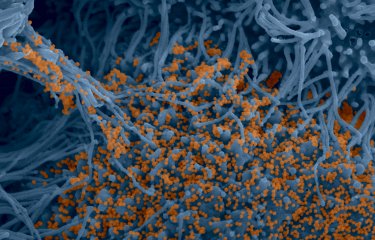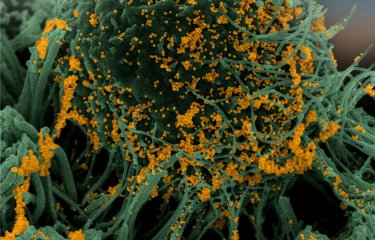Using state-of-the-art sequencing and bioinformatics techniques, scientists from the Institut Pasteur, working with fellow scientists from Israel and China, determined that patients with severe forms of COVID-19 presented an abnormal, ineffective lymphocyte response and a massive infiltration of inflammatory cells in the lungs.
Patients with COVID-19 (see the COVID-19 fact sheet)
present a wide variety of clinical forms, ranging from mild cases to respiratory distress syndromes requiring respiratory assistance. While various factors such as age, sex and weight have been identified as being associated with severe forms, little is yet known about the biological mechanisms involved in the aggravation of the disease.
In a paper published in the prestigious journal Cell, the Institut Pasteur's Systems Biology Group, in collaboration with the Weizmann Institute (Israel) and the Third People's Hospital of Shenzhen (China), studied the immune response at work in the lungs of patients with moderate and severe forms of COVID-19.
Using state-of-the-art sequencing and bioinformatics techniques, the scientists determined that severe patients presented an abnormal, ineffective lymphocyte response and a massive infiltration of inflammatory cells in the lungs.
A new bioinformatics approach also enabled them to identify precisely which cells were infected by the SARS-CoV-2 virus, responsible for COVID-19, and to highlight the possibility of co-infection with another respiratory virus, human metapneumovirus, which appears to significantly impair the antiviral response.
The research was supported by the LabEx IBEID.
Source
Host-Viral Infection Maps Reveal Signatures of Severe COVID-19 Patients, Cell, May 7, 2020
Pierre Bost,1,2,3,6 Amir Giladi,1,6 Yang Liu,4,6 Yanis Bendjelal,2 Gang Xu,4 Eyal David,1 Ronnie Blecher-Gonen,1 Merav Cohen,1 Chiara Medaglia,1 Hanjie Li,1 Aleksandra Deczkowska,1 Shuye Zhang,5 Benno Schwikowski,2,*Zheng Zhang,4,* and Ido Amit1,7,*
1 Department of Immunology, Weizmann Institute of Science, Rehovot, Israel
2 Systems Biology Group, Department of Computational Biology and USR 3756, Institut Pasteur and CNRS, Paris 75015, France
3 Sorbonne Université, Complexité du vivant, Paris 75005, France
4 Institute for Hepatology, National Clinical Research Center for Infectious Disease, Shenzhen Third People’s Hospital, School of Medicine, Southern University of Science and Technology, Shenzhen 518112, Guangdong Province, China
5 Shanghai Public Health Clinical Center and Institute of Biomedical Sciences, Fudan University, Shanghai 201508, China
6 These authors contributed equally
7 Lead Contact
*Correspondence: benno@pasteur.fr (B.S.), zhangzheng1975@aliyun.com (Z.Z.), ido.amit@weizmann.ac.il (I.A.)
This study is part of the priority scientific area Emerging infectious diseases of the Institut Pasteur's strategic plan for 2019-2023.






